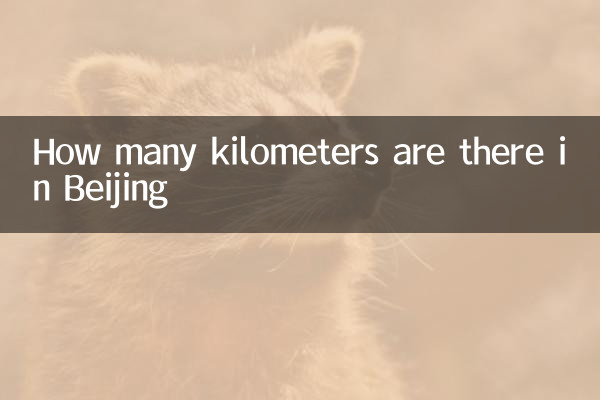How many kilometers are there in Beijing
As the capital of China, Beijing is not only the center of politics, economy and culture, but also a vibrant modern metropolis. In recent years, Beijing's urban construction and development have attracted much attention. This article will combine popular topics and hot contents across the network for the past 10 days, and present relevant data from Beijing to you through structured data.
1. Geographic and transportation data in Beijing

| index | data |
|---|---|
| Total area of Beijing | 16,410 square kilometers |
| Area of built-up urban areas | About 1,481 square kilometers |
| Subway operating mileage | About 783 kilometers (2023 data) |
| Total highway mileage | About 1,200 km |
| Total length of bus route | More than 20,000 km |
2. Beijing’s administrative division data
| Administrative Region | Area (square kilometer) | Population (10,000 people) |
|---|---|---|
| Dongcheng District | 41.84 | 79.4 |
| Xicheng District | 50.70 | 110.7 |
| Chaoyang District | 470.80 | 345.2 |
| Haidian District | 431.00 | 313.0 |
| Fengtai District | 305.80 | 201.8 |
| Shijingshan District | 84.32 | 56.3 |
| Fangshan District | 1,994.00 | 109.6 |
| Tongzhou District | 906.00 | 184.3 |
| Shunyi District | 1,020.00 | 132.4 |
| Changping District | 1,343.50 | 226.7 |
| Daxing District | 1,036.00 | 199.1 |
| Huairou District | 2,557.30 | 41.6 |
| Pinggu District | 950.13 | 46.2 |
| Miyun District | 2,229.45 | 50.3 |
| Yanqing District | 1,993.75 | 34.7 |
3. Popular topics and hot content in Beijing
According to the popular topics and hot topics in the entire network for the past 10 days, Beijing’s hot topics are mainly concentrated in the following aspects:
| Hot categories | Specific content |
|---|---|
| Urban Transportation | Beijing Metro new line planning, shared bicycle management, and pilot discussion on congestion fees |
| Environmental protection | Measures for improving air quality, progress of garbage classification, and promotion of new energy vehicles |
| Cultural Education | Adjustment of college enrollment policies, new museum exhibitions, and subsequent utilization of Winter Olympic venues |
| Economic Development | Progress in the construction of Beijing's international consumer center city and digital economy demonstration zone |
| Hot spots for people's livelihood | Renovation of old communities, construction of affordable housing, and community elderly care services |
4. Beijing's urban development prospects
As a megacity, Beijing will continue to focus on the following aspects in the future:
| Development direction | Specific goals |
|---|---|
| Transportation construction | By 2025, the rail transit mileage will reach 1,000 kilometers |
| Ecological environment | The forest coverage rate reached 45%, and the annual average concentration of PM2.5 continued to decline |
| Technological innovation | Build an international science and technology innovation center and build a benchmark city for digital economy |
| Urban renewal | Complete the task of renovating old communities by the end of 2000 |
| Cultural Development | Build a museum city and create a "Book-flavored Beijing" |
From the above data, we can see that as a rapidly developing modern metropolis, Beijing not only ranks among the top in the country in terms of area and population size, but also shows strong vitality and potential in urban construction and future development. From the transportation network to the ecological environment, from scientific and technological innovation to cultural development, Beijing is constantly moving towards a more livable and international influence.
Whether it is permanent residents or foreign tourists, understanding Beijing's various data and development plans will help to better understand and experience the charm of this city. I believe that in the future development, Beijing will continue to maintain its unique urban characteristics and show the style of the Chinese capital to the world.

check the details

check the details